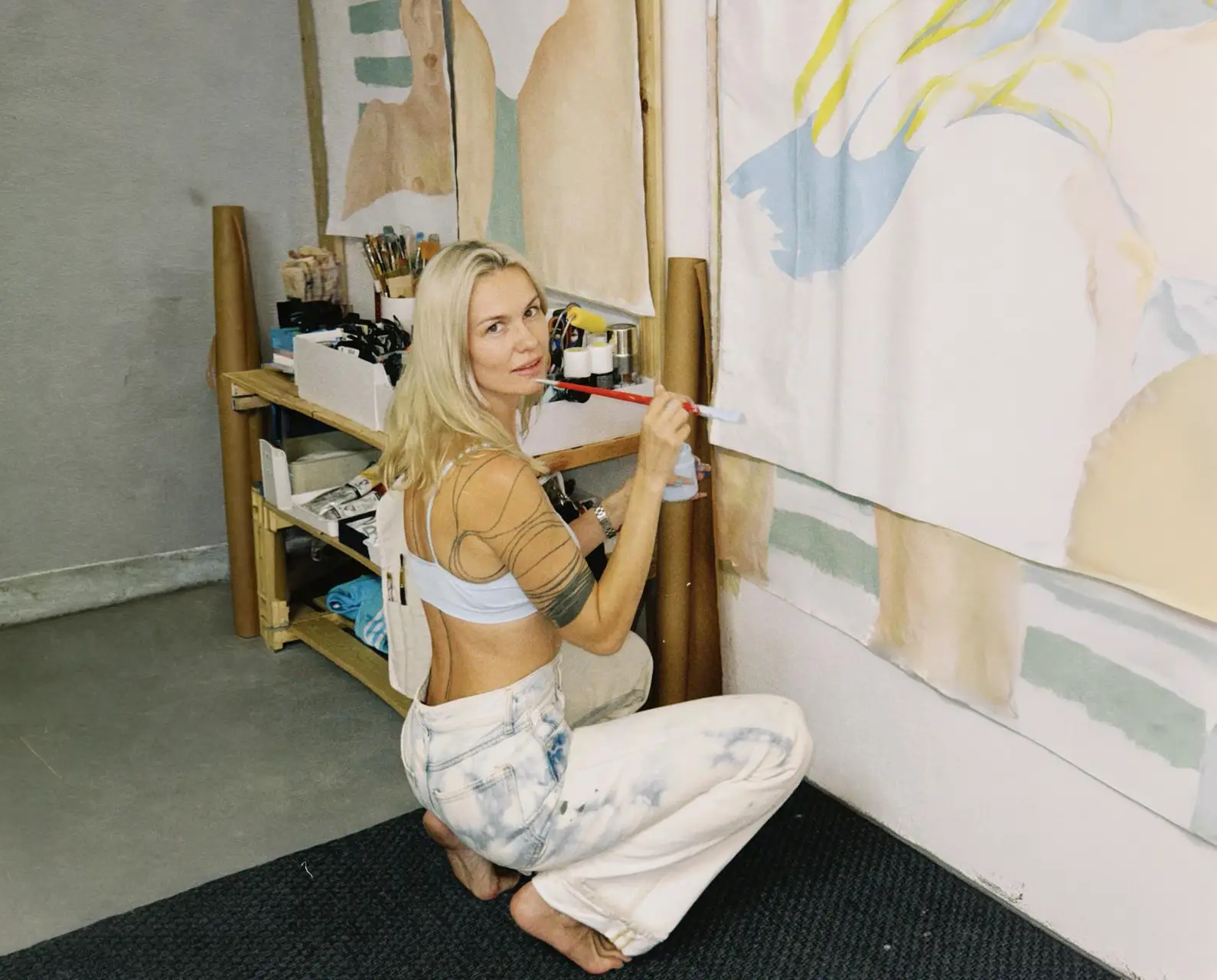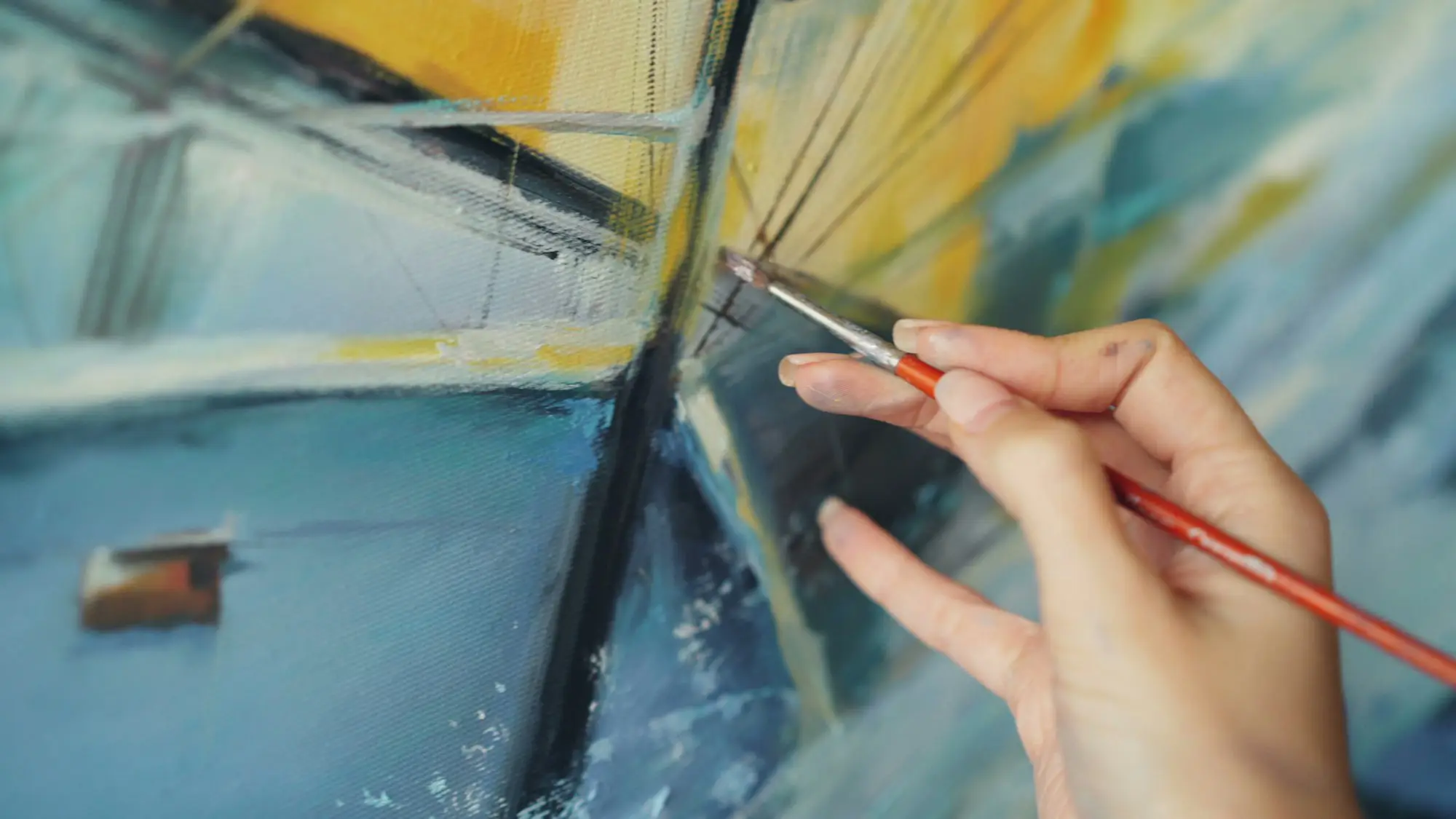How to Name Your Artwork: Creative Strategies and Meaningful Title Ideas
1. Intro & Scope
A title is the first impression your artwork makes. It helps curators file, collectors search, and viewers connect. This guide from subjektiv.art breaks down naming strategies from our studio into a clear, fast process. You can finish it in one afternoon. Read start to finish or skip around. Each section is short, about 300 words. The whole guide stays under 3,000.
Why Titles Matter
- Recognition – “Starry Night” triggers memory faster than the image.
- Search & Sales – Words show up in Google. Brushstrokes don’t.
- Signal Value – A strong title shows you’ve thought about the work.
How to Use This Guide
Work through Sections 2–7 with a fresh page or worksheet (see Section 10).
Sections 8–11 help polish and publish the final version.
2. Understanding Your Artwork Before You Title It
A good title captures the core of your work. You can’t name it well if you haven’t figured out what it really says. Start here.
Core Theme, Mood & Message
Write a two-sentence summary of the piece.
Example: “This painting explores urban loneliness through cool greys and fractured skylines.”
Now underline key nouns and verbs. These become title seeds.
Medium, Scale & Series Context
Size shapes tone.
- A six-metre mural can feel epic.
- A postcard etching might suggest wit or intimacy.
Ask:
- Is this part of a series?
- If so, should the titles follow a pattern?
Consistency often beats cleverness in multi-work sets.
Identifying Your Primary Audience
Think about who's reading the title.
- Is it for Instagram?
- A gallery label?
- A museum curator?
Your language needs to match their expectations.
- Casual works online.
- Formal reads well in catalogues.
- Poetic gets remembered.
- Meme-friendly grabs scrolls.
Pick the tone that meets them where they are.
3. Creative Naming Strategies
One piece. Many angles. These naming types help you try different directions before you land on the right one.
Descriptive Titles
Go literal.
- “Girl with Red Umbrella”
- Anchors the viewer fast
- Best for realism and documentary-style work
Metaphorical / Symbolic
Blend objects and meaning.
- “Paper Ships in Iron Seas”
- Works when your visuals hint at deeper ideas
Narrative & Story-Driven
Pull from fiction—add story, mood, or aftermath.
- “After the Storm Broke, We Slept”
- Great for emotional or cinematic work
Conceptual / Abstract Wordplay
Match the title to feeling or process.
- “Chromatic Drift No. 2”
- Ideal for non-figurative or experimental pieces
One-Word Power Titles
Short. Punchy. Easy to search.
- “Reverb”
- “Eclipse”
- “Pulse”
- These play well on labels, walls, and social feeds
Studio Exercise
Write one title in each of the five styles above. Then circle the one that hits hardest. That’s your starting point.
4. Wordcraft & Language Tools
You’ve got the idea. Now sharpen the language. These tools help you turn a rough draft into a title that sticks.
Literary Devices
Use these to add rhythm or punch:
- Alliteration – Repeating first sounds:“Silver Silence,” “Crimson Cacophony”
- Assonance – Repeating vowel sounds:“Echo of Oases”
- Contrast – Juxtaposing opposites:“Fragile Giants”
Use sparingly—just enough to add texture without feeling forced.
Multilingual Flair
Foreign words can add nuance, but only if you know them well.
- “Saudade” (Portuguese) works.
- Google-Translate-level Japanese doesn’t.
If you borrow, respect the culture. Know the full meaning.
Synonyms, Thesauri & AI Generators
Run key words through a thesaurus to expand your options.Check connotations. Avoid awkward or out-of-place phrasing.
AI tools can spark ideas, but don’t expect them to finish the job. They’re for brainstorming, not final drafts.
Good language turns a good idea into a memorable title.
5. Avoiding Clichés & Common Pitfalls
Overused Phrases & the Untitled No. 7 Trap
Some words have lost their edge:
- “Journey”
- “Reflections”
- “Soulscape”
They don’t say much anymore. If you must go untitled, add a hook: “Untitled (Solar Lullaby)” gives just enough to anchor the viewer.
Ambiguity vs. Vagueness
There’s a line between mystery and confusion.
- Mystery pulls people in.
- Vagueness pushes them away.
Test it:Ask a friend what the title suggests.If they shrug, you haven’t gone deep enough
Trademark & Copyright Checks in 60 Seconds
Search your title idea in quotes + “painting” or “album.”Example: "Neon Exodus" painting
If nothing major shows up, you’re clear.If the phrase is everywhere, tweak it.
Smart titles don’t explain. They frame.Avoid what’s tired, test what’s unclear, and protect what’s original.
6. Cultural, Ethical & Market Considerations
A title lives in the world. Make sure it holds up across cultures, platforms, and professional spaces.
Sensitivity & Appropriation
If you're referencing a culture, know it deeply.
- Understand the language.
- Respect the symbols.
- Credit your sources.
Surface-level borrowing reads as careless.
SEO & Discoverability
Search engines care about nouns.
Put a strong, clear word at the front:“Neon Exodus (Mixed-Media Diptych)”
That one phrase boosts indexing, clarity, and sales.
Gallery, Fair & Auction Preferences
Some venues require details in the title:
- Medium
- Year
- Series number
Check submission guidelines early. A last-minute title change can cost time—or a spot on the wall.
The right title balances personal meaning with public readability.
7. Testing Your Title
A title that sounds good in your head isn’t always the one that sticks. Test before you commit.
Quick Audience Polls
Use Instagram Stories or close friends.
- Post two title options.
- Watch for replies—not just votes.
- Strong reactions matter more than like counts.
Reading It Aloud
Say it out loud—twice.
- If it flows, it’s solid.
- If it stumbles, it needs a trim.
Tongue-twisters break rhythm. Smooth titles sound effortless.
Archivability
Think long-term.
- Will curators understand the reference in 2045?
- If not, consider adding a subtitle.
Example:“404 Error (Self-Portrait Series)”
A good title works in the moment.
A great one survives the archive.
8. Formatting & Consistency
Strong titles help you stand out. Consistent formatting helps you stay organized.
Capitalisation Styles
Use Title Case (Cap Every Important Word).It’s standard for gallery catalogues and labels.
Avoid ALL CAPS unless it’s part of the concept.
Date, Medium & Series Number
Add these only when needed.
For a series:“Tidal Sequence #4, 2025”
For everything else, let the wall label handle medium and date.
Cohesive Naming Scheme
Think ahead.
- Will your next 10 pieces follow a similar title format?
- Series with consistent grammar or tone build collector trust.
Examples:
- All one-word verbs: “Drift,” “Split,” “Fuse”
- All conceptual phrases: “Notes for a Future Archive,” “Echo Study No. 3”
Decide once, apply across the board.
Titles aren’t just names—they’re a system.
Keep it clean. Keep it readable. Keep it yours.
9. Documenting & Publishing the Title
Once your title is locked, lock it everywhere else too. Inconsistency breaks trust.
Updating Catalogues & Certificates
Log the final title in:
- Your DAM (digital asset manager)
- Spreadsheets
- Certificates of authenticity
Then sync across:
- Website
- Captions
- Invoices
If one field’s off, it can mess with provenance.
Metadata for Websites, NFTs & Databases
Embed the title in your image file’s IPTC field.
- NFT platforms read this when minting.
- Online galleries pull from metadata too.
- Add it once. It stays with the file.
Version Control
If you rename the work later:
- Add the old name in parentheses
- Update all connected records
Example:“Urban Fog (formerly ‘Grey #3’)”
Collectors and curators will thank you.
Names travel. Track them properly and your work stays traceable.
10. Subjektiv.art Title Lab - Pro Tips & Resources
Subjektiv Pro Tip: Keep a shared “Live Titles” Google Doc.
- Let every team member drop phrases or name ideas.
- We’ve salvaged three catalogue deadlines this way.
11. Quick-Reference Checklist & FAQ
Use this to confirm you’ve covered every step—from first draft to final publish.
Title Checklist
1. Defined the artwork’s message? (See Section 2)
2. Drafted three or more title options? (See Section 3)
3. Refined using rhythm or contrast? (See Section 4)
4. Screened for clichés or legal overlap? (See Section 5)
5. Checked tone, SEO, and cultural context? (See Section 6)
6. Tested aloud or via poll? (See Section 7)
7. Locked formatting and naming scheme? (See Section 8)
8. Synced title across docs, files, and platforms? (See Section 9)
FAQ Snapshot
Q: Can I rename a work after an exhibition?Yes. Just document the change and notify any owners or cataloguers. Provenance matters.
Q: Is “Untitled” ever okay?Yes—for conceptual minimalism. Add something parenthetical to ground it:Untitled (Window Study)
Q: Should my titles match across languages?Offer one “official” version. Translate loosely for media kits.
Closing Thought
A title doesn’t explain the art. It opens a door.
Draft boldly. Test fast. And remember, your strongest title might already be in a sketchbook margin, waiting.
Happy naming, and dont miss to tag @subjektiv.art when you unveil your next masterpiece - we love seeing those words come alive.




